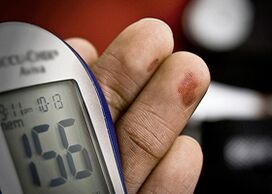
The concept of "diabetes"It is customary to denote a group of endocrine diseases that develop as a result of an absolute or relative shortage of hormone in the bodyinsulin.In view of this condition, the patient manifests itselfHyperglycemia- a significant increase in the amount of glucose in human blood.Diabetes mellitus is characterized by a chronic course.In the process of developing the disease, a violation of metabolism as a whole occurs: it is violatedfatty,protein,carbohydrate,mineralAndwater-saltexchange.According to WHO statistics, about 150 million people are sick in the world of diabetes.By the way, not only a person, but also animals, for example, cats, are sick with diabetes.
The meaning of the word "diabetes" from the Greek language is "expiration."Therefore, the concept of “diabetes mellitus” means “losing sugar”.In this case, the main sign of the disease is displayed - the excretion of sugar in the urine.To date, there are many studies regarding the causes of this ailment, however, the causes of the manifestation of the disease and its complications are subsequently not yet finally established.
Types of diabetes
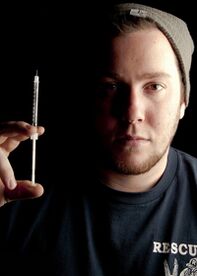
Diabetes mellitus sometimes also occurs in humans as one of the manifestations of the underlying disease.In this case, we are talking aboutSymptomatic diabeteswhich can occur against the background of the defeatthyroidorpancreas glands,adrenal glands,The pituitary gland.In addition, this form of diabetes develops as the consequences of treatment with some drugs.And if the treatment of the underlying disease passes successfully, then diabetes are cured.
Diabetes mellitus is usually divided into two forms: thistype 1 diabetes, that is,Insulin -dependent, and alsotype 2 diabetes, that isInsulin -dependent.
Type 1 diabetes mellitus is most often manifested in young people: as a rule, most of these patients are not thirty years old.About 10-15% of the total number of patients with diabetes suffer this form of the disease.Diabetes mellitus in children manifests itself mainly in this form.
Diabetes of the first type is a consequence of the damage to the beta-cells of the pancreas that produce insulin.Very often, this type of diabetes people get sick after viral ailments -mumps,viral hepatitis,RUBLICH.Often diabetes of the first type occurs asAutoimmune diseasebDue to the defect in the immune system of the body.As a rule, in a person who is ill with the first type of diabetes, unhealthy thinness manifests itself.In the blood, sugar levels significantly increase.Patients with the first type of diabetes depend on the constant injections of insulin, which become vital.
Among diabetics, as a whole, patients with type 2 diabetes prevail.At the same time, about 15% of patients with this form of the disease have normal weight, and everyone else suffers from overweight.
Type 2 diabetes is developing, as a result of a fundamentally different cause.In this case, with beta cells, enough or too much insulin is produced, however, tissues in the body lose the ability to accept its specific signal.In this case, insulin injections for survival are not required, but sometimes they are prescribed in order to control the patient's blood sugar.
The causes of diabetes
One of the forms of type of type 1 diabetes-"Insulin -dependent", the main reason for this form can be complications after viral infections, for example,flu,herpes, and alsocholelithiasis.Factors that contribute to a disease of type 2 diabetes-"Insulin -dependent", are genetic predisposition, as well as diseases of the endocrine system and obesity.
The main reason for the manifestation of diabetes becomes impairedCarbohydrate metabolism, which is manifested due to the impossibility of pancreas to produce the right amount of insulin hormone or produce insulin of the necessary quality.There are many assumptions regarding the causes of such a state.It is known for certain that diabetes is an non -strut disease.There is a theory that the cause of the disease is genetic defects.It is proved that a higher risk of the disease occurs in those people whose close relatives were sick with diabetes.The probability of the disease in people whose diabetes was diagnosed in both parents is especially high.
Experts define another significant factor that directly affects the possibility of diabetesobesity.In this case, a person is accessible to adjust his own weight, so you should treat this issue with all seriousness.
Another provoking factor is a number of diseases, the result of which is the defeatBeta cells.First of all, we are talking aboutpancreatitis,diseases of other glands of internal secretion,pancreatic cancer.
Viral infections can serve as a kind of trigger mechanism for the start of diabetes.Viral infections “launch” diabetes in far from every case.However, people who have a predisposition of a hereditary character to diabetes and other arranging factors have a much higher risk of getting sick due to infection.
In addition, doctors determine as a predisposing factor to the factor.stressAnd emotional overstrain.Elderly people should remember the possibility of sick diabetes: the older a person becomes, the more likely the disease.
At the same time, the assumption of many about the fact that with diabetes those who love to constantly eat a lot of sugar and sweet products are at risk of getting sick from the point of view of high probability of obesity in such people.
In more rare cases, diabetes mellitus in children and adults occurs as a consequence of certain hormonal disorders in the body, as well as damage to the pancreas due to alcohol abuse or taking some drugs.
Another assumption indicates the viral nature of diabetes.So, type 1 diabetes can manifest due to viral damage to the beta cells of the pancreas, producing insulin.As a response, the immune system producesantibodiesthat are calledinsular.
However, to this day, there are many obscure points in the issue of determining the causes of diabetes.
Symptoms of diabetes
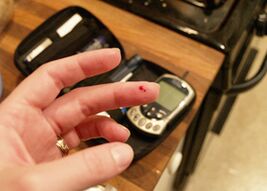
Symptoms of diabetes mellitus, first of all, are manifested by too intense production of urine.A person begins to urinate not only often, but also a lot (a phenomenon calledPolyuria).In view of such a phenomenon, the patient has a veryStrong thirst.Together with the urine, stands outglucose, a person loses calories.Therefore, a sign of diabetes mellitus will also be too strong appetite due to the constant feeling of hunger.
Other unpleasant phenomena occur as symptoms of diabetes: severe fatigue,Constant drowsiness, the presence of itching in the perineum.The patient can freeze the limbs, and visual acuity gradually decreases.
The disease progresses, and the following signs of diabetes are manifested.The patient notes that his wounds heal much worse, gradually the life of the body is inhibited as a whole.
It is important to take into account that the main signs of diabetes, which each person should pay attention to, is the loss of vitality, a constant feeling of thirst, rapid excretion from the body with the urine of the consumed fluid.
However, at first, the symptoms of diabetes mellitus may not appear at all, and the disease can only be determined by laboratory tests.If the disease does not appear, and a slightly increased sugar content is detected in the blood and its presence in the urine occurs, then in a person is diagnosedPrediabetic state.It is characteristic of a very large number of people, and after ten to fifteen years, they have been developing type 2 diabetes.In this case, insulin does not perform a splitting functioncarbohydrates.As a result, too little glucose enters the bloodstream, which is a source of energy.
Diagnosis of diabetes
Diabetes mellitus manifests itself in a person gradually, therefore, doctors distinguish three periods of its development.In people who are prone to illness due to the presence of some risk factors, the so -called period is manifestedPrediabet.If glucose is already absorbed with disorders, but the signs of the disease do not yet occur, then the patient is diagnosed with the periodhidden diabetes.The third period is directly the development of the disease.
Laboratory tests are of particular importance for the diagnosis of diabetes in children and adults.When examining urine, it is foundacetoneAndsugar.The fastest method for establishing a diagnosis is a blood test in which the glucose content is determined.This, moreover, is the most reliable diagnostic method.
Higher research accuracy guarantees the oral tolerance of glucose tolerance.Initially, it is necessary to determine what level of glucose in the blood of the patient is on an empty stomach.After that, a person should drink a glass of water in which 75 grams of glucose are pre -dissolved.After two hours, a second measurement is carried out.If the result of the glucose content was from 3.3 to 7.0 mmol/l, then glucose tolerance is disturbed, with a result of more than 11.1 mmol/l, the patient is diagnosed with diabetes.
In addition, during the diagnosis of diabetes, a blood test is carried out forglycogenydIn order to determine the average level of blood sugar over a long period (about 3 months).This method is also used to determine how effective was the treatment of diabetes in the last three months.
Treatment of diabetes

Doctors prescribe comprehensive treatment of diabetes in order to support the normal content of glucose in the blood.In this case, it is important to take into account that neitherhyperglycemia, that is, an increase in sugar levels, norHypoglycemia, that is, his fall.
During the whole day, glucose content should be at about the same level.Such support allows us to prevent the manifestation of diabetes complications, which are life -threatening.Therefore, it is very important that the person himself carefully controls his own state and is as disciplined as possible to therapy for the disease.Glucometer- This is a specially designed device, which makes it possible to independently measure the level of glucose in the blood.To analyze, you should take a drop of blood from a finger and apply it on a test strip.
It is important that the treatment of diabetes in children and adults begins immediately after a person is made a corresponding diagnosis.The doctor defines methods for treating diabetes mellitus, given what type of diabetes the patient takes place.
For the treatment of type 1 diabetes, it is important to provide lifelong hormone replacement therapy.For this, every day a patient who has the first type of diabetes is diagnosed should make insulin injections.There are no other treatment options in this case.Before the role of insulin was determined in 1921, diabetes did not give in to treatment.
There is a special classification of insulin, which is based on where the drug comes from, and what is the duration of its action.Distinguishbullish,porkAndhumaninsulin.Due to the detection of a number of side effects, bull insulin is used less often today.The closest in structure to human is the pork insulin.The difference is in oneamino acid.The duration of the effects of insulins can beShort,Average,Long.
As a rule, the patient produces insulin in about 20-30 minutes before eating.It is inserted into the thigh, shoulder or stomach subcutaneously, while the injection site should be alternated at every injection.
When insulin enters the blood, it stimulates the process of transition of glucose from blood to tissue.If there was an overdose, it is fraught with hypoglycemia.The symptoms of this condition are as follows: the patient has a trembling, an enhanced separation of sweat, a heartbeat quickens, a person feels a strong weakness.In this state, a person should quickly increase the glucose level, using several tablespoons of sugar or a glass of sweet water.
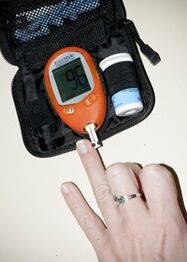
An insulin administration scheme should be selected exclusively by a specialist, taking into account all the characteristics of the body, as well as the image of his life.The selection of daily doses of insulin is made so that it corresponds to the physiological norm.Two -thirds of the hormone doses are accepted in the morning and afternoon, one third in the afternoon and at night.There are several different schemes for the introduction of injections, the feasibility of the use of which is determined by the doctor.Insulin doses correction is possible depending on a number of factors (diet, physical loads, features of carbohydrate metabolism).An important role in determining the optimal intake of insulin is given to independent measurement of glucose levels and keeping records regarding self -observation.
In this case, the corresponding diet in diabetes is very necessary.It is important that the patient takes food according to a special scheme: three main meals and three additional ones.Power supply for diabetes is taking into account the fact that the blood glucose content is most strongly increased by carbohydrates.However, a severe restriction of their use is not required.Subject to normal human body weight, it is important to take into account the amount of carbohydrates in order to choose the correct dose of insulin.
If a person has a second type diabetes diabetes, then at the beginning of the disease you can not take drugs at all.In this case, a diet in diabetes is important, which provides for the minimization of the use of simple carbohydrates and a competent approach to physical exertion.If diabetes progresses, drug therapy is required.The doctor prescribes treatment with sugar -free drugs.He chooses suitable drugs from derivativessulfonelmochevina,Prandial Glikemia regulators.They help to increase sensitivity to fabric insulinBiguanides(drugs also lower the absorption of glucose in the intestine) andthiazolidindo.In the absence of the effect of treatment with the specified drugs, patients are prescribed by insulin therapy.
With diabetes, folk recipes are also practiced that stimulate a decrease in blood sugar.For this purpose, decoctions of herbs that have such properties are used.This is a sheet of blueberries, flax seeds, leaf sash, laurel sheet, juniper and rosehip fruits, burdock root, dioecious nettle leaves, etc. Decoctions of herbs are taken several times a day before eating.
Power supply for diabetes
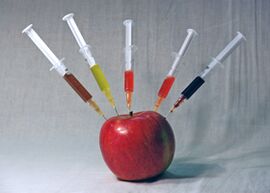
For patientssugarType 1 diabetesThe main treatment of diabetes is insulin injections, and the diet serves as a significant addition to drug treatment, while for patientstype 2 diabetes- A dietary diet based on a diet is the main method of treatment.Since the normal functioning of the development of diabetes is impairedpancreas, leading to a decrease in the production of insulin, which is involved in the assimilation of sugar by the body, then proper nutrition and diet are of great importance.Diet for diabetes is used to normalize carbohydrate metabolism and to prevent fat metabolism.
What should be food:
- frequent and regular meals (preferably4-5 timesper day, at about the same time), it is advisable to evenly distribute the use of carbohydrates according to meals;
- The food should be richmacro-Andmicroelements(zinc, calcium, phosphorus, potassium), and alsovitamins(vitamins of group B, A, P, ascorbic acid, retinol, riboflavin, thiamine);
- Food should be varied;
- sugarIt is worth replacingsorbitol, xilitis, fructose, aspartamorsugarinwhich can be added to suitable food and drinks;
- You can use before1.5 litersliquids per day;
- Preference should be given to difficult to digest carbohydrates (vegetables, fruits, bread from coarse flour), products containing fiber (raw vegetables, beans, peas, oats), and limit the use of products rich in cholesterol - egg yolks, liver, kidneys;
- The diet must be observed strictly so as not to provoke the development or exacerbation of the disease.
Diet for diabetes does not prohibit sugar, and in some cases recommends the following products in the diet:
- Black or specialDiabetic bread(200-300 gr. Per day);
- vegetable soups, cabbage soup, okroshki, beetroot;
- Soups prepared on meat broth can be consumed 2 times a week;
- low-fat meat (beef, veal, rabbit), poultry (turkey, chicken), fish (pike perch, cod, pike) (approximately 100-150 gr. per day) in boiled, baked or pouring form;
- Useful dishes of cereals (buckwheat, oatmeal, millet), and pasta, legumes can be consumed every other day;
- potatoes, carrots and beets - no more than 200 g.per day;
- The rest of the vegetables - cabbage, including colored, cucumbers, spinach, tomatoes, eggplant, as well as greens, can be consumed without restrictions;
- eggs can be no more than 2 pieces;
- 200-300 gr.on the day of apples, oranges, lemons, it is possible in the form of juices with pulp;
- dairy products (kefir, yogurt)-1-2 cups per day, and cheese, milk and sour cream-with the permission of the doctor;
- Low-fat cottage cheese is recommended to be consumed daily at 150-200 gr.per day in any form;
- From fats per day can be consumed until 40 g. Warm butter and vegetable oil.
Of the drinks, it is allowed to drink black, green tea, weak coffee, juices, compotes from the berries of acidic varieties with the addition of xilitis or sorbitol, rosehip decoction, and mineral water.
It is important for people with diabetes.Easily digestible carbohydrates.Such products include sugar, honey, jam, confectionery, sweets, chocolate.The use of cakes, muffins, from fruits - bananas, raisins, grapes is strictly limited.In addition, it is worth minimizing usefatty foods, first of all, fat, vegetable and butter, fatty meat, sausage, mayonnaise.In addition, it is better to exclude fried, sharp, spicy and smoked dishes, sharp snacks, salted and pickled vegetables, cream, alcohol from the diet.Salted salt per day can be consumed no more than 12 g.
Diet for diabetes

Diet in diabetes must be observed without fail.Features of diet in diabetes in this case imply the normalization of carbohydrate metabolism in the human body and at the same time facilitating the functioning of the pancreas.Diet excludes easily digestible carbohydrates, limits the usefats.People with diabetes need to consume a lot of vegetables, but at the same time limit cholesterol -containing foods and salt.Food should be baked and cook.
A patient with diabetes is recommended to eat a lot of cabbage, tomatoes, zucchini, herbs, cucumbers, beets.Instead of sugar, patients with diabetes can eat xylit, sorbitol, fructose.At the same time, it is necessary to limit the amount of potatoes, bread, cereals, carrots, fats, honey.
It is forbidden to eat confectionery sweets, chocolate, sweets, jam, bananas, spicy, smoked, ram and pork fat, mustard, alcohol, grapes, raisins.
You always need to take food at the same time, food intake cannot be passed.Food should contain a lot of fiber.To do this, periodically should include legumes, rice, oats, buckwheat in the diet.Every day, a patient with diabetes should drink a lot of liquids.
Diet No. 9

Dietetologists developed a special diet recommended as the main nutrition for diabetes.A feature of diet No. 9 is that it can be adapted to the individual tastes of the patient, adding or excluding some dishes at will.Diet in diabetes creates the conditions for normalizing carbohydrate metabolism, helps to maintain the patient's performance, and is developed taking into account the severity of the disease, concomitant diseases, weight, and energy costs.There is also diet No. 9A, which is used as the basis for the compilation of the diet atmild form of diabetes.As well as in forms with concomitant obesity of varying degrees in patients who do not receive insulin, and No. 9b, with an increased norm of protein consumption, for patients with a severe form of diabetes, who receive insulin treatment of diabetes and have additional physical activity.Heavy shapeOften complicated by diseases of the liver, gall bladder, pancreas.
Diet No. 9Includes approximately such a diet:
- The first breakfast(to work, 7 o’clock in the morning): buckwheat porridge, meat paste, or low -fat cottage cheese;Tea on XLET, bread with butter.
- Lunch(at lunchtime, 12 hours of the day): cottage cheese, 1 cup of kefir.
- Dinner(after work, 17 hours of the day): vegetable soup, potatoes with boiled meat, one apple or orange.Or: wiped cabbage soup, boiled meat with stewed carrots, tea on xylita.
- Dinner(20 o’clock in the evening): boiled fish with cabbage, or potato pins, rosehip decoction.
- Before going to bed, one glass of kefir or yogurt.
Prevention of diabetes
Prevention of diabetes provides for the maintenance of the most healthy lifestyle.You should not allow extra pounds, constantly exercise and play sports.Each person should reduce the use of fat and sweets.If a person is already forty years old or in his family there have been cases of diabetes, then the prevention of diabetes sugar provides for a regular test of blood sugar.
You need to try to consume a lot of fruits and vegetables every day, include more products in the diet with a high content of complex carbohydrates.It is equally important to monitor how much salt and sugar enters the everyday diet - in this case, abuse is not allowed.There should be many vitamin -containing products in the diet.
In addition, for the prevention of diabetes, it is important to constantly be in a state of mental balance, to avoid stressful situations.In addition, a violation of carbohydrate metabolism is manifested as a result of increased pressure, so it is very important to prevent this condition in advance.
Complications of diabetes

The complications of diabetes that are manifested if the treatment of diabetes is not carried out is a particular danger to human health and life, or it is carried out incorrectly.Due to such complications, a fatal outcome often occurs.It is customary to distinguish between acute complications of diabetes, which develop rapidly in the patient, as well as late complications, which occur several years later.
Acute complications of diabetes are manifestedcoma: In this state, the patient loses consciousness, he has violated the functions of a number of organs - liver, kidneys, heart, nervous system.The reasons for the development of coma are a strong changeacidityblood, a violation of the ratio of salts and water in the body, the manifestation of lactic acid in a large amount, a sharp drop in the blood of glucose levels.
As late complications of diabetes, damage to the small vessels of the kidneys and eyes often occurs.If a large vessel is affected, then the occurrence may occurstroke,myocardial infarction,Gangrene legs.The human nervous system also suffers.























